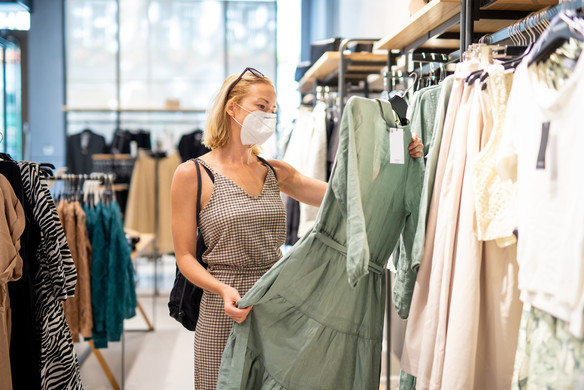Table of contents
The spring air is heady with optimism. Americans are forging ahead with post-vaccination plans, and the season of so-called “revenge shopping” is upon us.
As consumers emerge from the long, dark days of quarantine, they are eager to spend money and make up for lost time. This trend is expected to lead the country into an era comparable to the Roaring 20s, with the National Retail Federation anticipating that retail sales will grow between 6.5 and 8.2% in 2021 – the highest rise in retail spending in 17 years.
Many buyers are eager to resume in-person shopping as social distancing guidelines ease and vaccinations increase. Already, Waze data shows that they are on the move, with navigation to physical stores up 29% with respect to early lockdown lows. Indeed, nearly 30% of consumers report that they expect to increase the frequency of their in-store visits, with 46% saying they prefer to try items before they buy.
“We are seeing a strong openness for trying new brands so there’s an opportunity for retailers to use their messaging to reach and influence consumers along the journey,” says Liz Franz, head of industry, CPG and Retail at Waze. “Whereas previously we saw shoppers consolidating their shopping trips and sticking with stores and brands they were familiar with to maintain a sense of control, now they are feeling a little more freedom to explore as they navigate their errands.”
Capitalizing on pent-up demand
Here are five ways merchants can take advantage of the new shopping frenzy.
1. Focus on fashion
As people begin to emerge from their homes, it’s only natural that they’d want to strut their stuff. After giving their pajama and sweat sets heavy wear, more than half of U.S. consumers anticipate springing for apparel in the coming months.
In fact, advance retail sales rose 9.8% in March, the best month for retail since the first round of stimulus checks hit bank accounts last May.
2. Highlight affiliations with customers’ values and priorities
The majority of customers today believe it is important to support minority-owned businesses. Retailers should proactively seek out ways to integrate with minority-owned suppliers and artisans, feature their wares, and educate customers about these cultural connections.
Sustainability is also of significance to shoppers these days, particularly right now, following Earth Day. A McKinsey study found that 67% of those surveyed cited the use of sustainable materials as an important factor in their purchase, with 63% saying the same about a brand’s promotion of sustainability.
3. Lean into the local appeal
One survey found that 55% of consumers say they show their support for local businesses by making purchases in-store; 57% said their main motivation to shop locally was to keep money in their community. And there may be many more folks in local communities these days, given that over 15.9 million people moved and planted new roots during the pandemic.
Shops that showcase goods from local artisans or suppliers can appeal to shoppers who are more eager than ever to connect with the community.
4. Offer guidance
After a year at home, many consumers may feel out of practice getting dressed to head out, whether it’s to meet friends for dinner, colleagues or clients, or even run errands.
While athleisure is here to stay for now, retailers can help consumers get back into the routine of dressing up for out-of-home events by creating complete, ready-to-wear outfits — all the way down to the shoes and accessories.
5. Emphasize safety protocols
While buyers resume their pre-COVID-19 routines, they are likely to remain vigilant. Merchants should underscore the precautionary measures they have in place, such as increased sanitation, limited capacity, or appointment-based assistance.
Use of “buy online, pickup in store” (BOPIS), also known as click-and-collect, or its cousin, curbside pickup, have skyrocketed, with 80% of shoppers saying they expect to increase their use of BOPIS and curbside pickup even as the pandemic wanes.
Move to the top of the shoppers’ lists
As buyers prepare to fling open their wallets, retailers can actively promote themselves at the moment of decision to make their store a stop of choice.
This article originally appeared on Retail Dive and was legally licensed through the Industry Dive publisher network. Please direct all licensing questions to [email protected].
![]()











